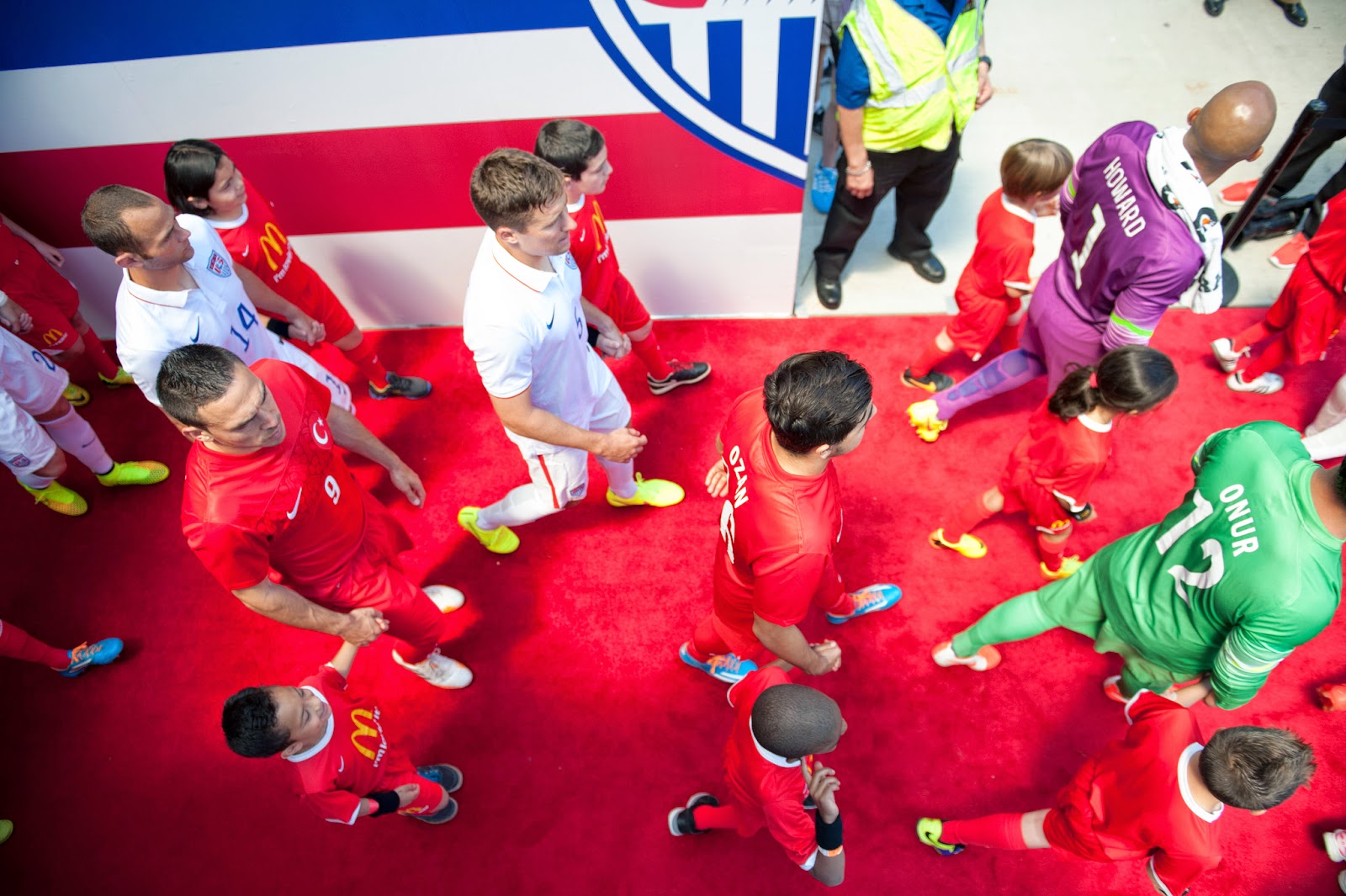 |
| United States defender Jermaine Jones answers questions during a media day outside the team's hotel in Sao Paulo, Brazil on June 13, 2014 | Carl Fonticella |
Thursday, September 18, 2014
Scripps Bobcats take on World Cup, Brazil 2014
By Kate Hiller
From the streets of Sao Paulo, Brazil, to the Westergas Terras restaurant and bar in Amsterdam, to viewing parties at Easton Town Center in Columbus, the 2014 FIFA World Cup was covered and experienced by bobcats around the globe. Through a partnership between the United States Soccer Federation (USSF), the Institute for International Journalism in the E.W. Scripps School of Journalism, seven undergraduate students from Ohio University (OU) were able to do more than just watch the games: they had the opportunity to travel around Brazil experiencing and covering the World Cup firsthand.
OU students Katy Andersen, Katie Foglia, Devin Ellis, Kevin Noonan, Marisa Salopek, Brieanna Charlebois and Carl Fonticella were selected to work with the USSF press, as well as with journalists from well-known publications such as Sports Illustrated and The Washington Post.
“They treated us like we were one of them, we weren't just the interns,” Carl Fonticella, a sophomore studying photojournalism, said about the media professionals that the group worked with. “It was really cool to get to know (people) with that much experience.”
Katy Andersen, a junior studying broadcast journalism, was the group's video intern. Though neither she nor Fonticella, who were both focused on visual journalism, had FIFA credentials and thus weren't on the field during the matches in Brazil, there was plenty of work to be done at practice, during press conferences, and around Sao Paulo. The pair was able to shoot a friendly match between the United States and Turkey in New Jersey before leaving the country, as well as team practices in Brazil.
While in South America, students had the opportunity to attend Fan Fests, which junior strategic communication major Brie Charlebois explained were a way to bring the atmosphere of a match outside the stadium to people who werent able to obtain tickets.
“(Soccer) culture is obviously growing in America, but it's definitely not what it is in other countries,” she said. “People are in to it, but were about multitasking now and there are too many sports going on, whereas in certain countries, during that time and always, soccer is the only thing that really matters.”
Charlebois worked under David Applegate, USSF Media Manager, as a PR assistant. In addition to writing stories for the USSF, all trip participants were required to contribute to www.scrippssoccer.org, a website put together for the JSchool's coverage of the World Cup from both Brazil and from another group of students working with the National Soccer Coaches Association of America in Europe.
“I got a mix of journalism and public relations,” Charlebois said. “It was interesting to actually be a part of something so huge but also be a part of that image. I got to know what it was actually like to work for a federation rather than just doing PR for things around campus.”
She also had the opportunity to attend two live matches in Brazil – USAvs. Portugal and the USA vs. Belgium. During the Portugal game, she was able to sit in the family and friends section, which she said was more relaxed than the American Outlaw section, which is where die-hard fans crowd in to cheer on the US team. Though there was not an American Outlaw section at the Belgium game, the area where Charlebois sat sort of morphed into one when people started up the usual cheers.
“(Sitting with the families), I analyzed and watched intensely,” she said. “We were put in a section over from the family members (for the Belgium game) and that section became the American Outlaw section, starting the chants. It was crazy but a lot of fun.”
From media experience and networking to attending one of the worlds largest sporting events, the partnership that was forged after a year and a half of negotiations was a success for all bobcats involved. For Fonticella, this experience was even a deciding factor in his career.
“My life is heading toward sports photography,” Fonticella said. “This internship helped me decide if I wanted to be a sports photographer or if I was just going to be a traditional photojournalist.”
Tips and tricks picked up in Brazil were not left behind when Andersen went through customs.
Subscribe to:
Posts (Atom)




